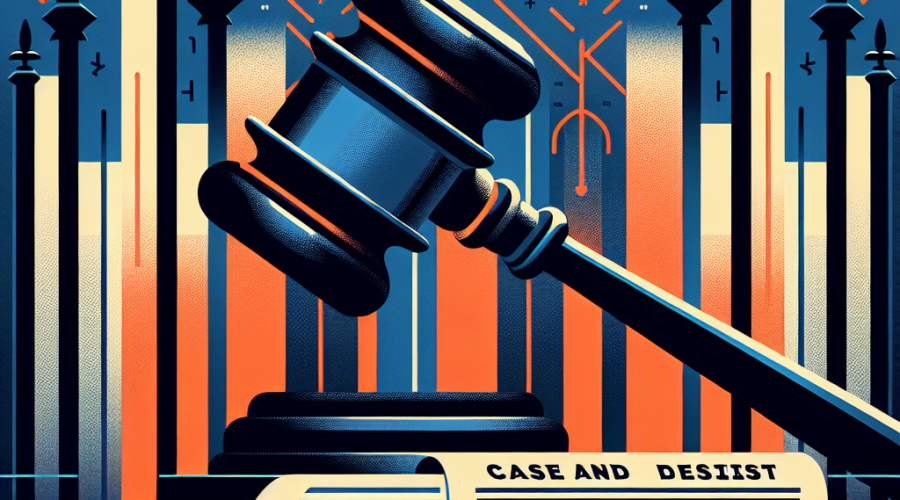The landscape of cryptocurrency is once again under the spotlight, as industry leaders and experts gather to assess its current trajectory and what it will take for true mass adoption. At this year’s Digital Asset Summit (DAS) hosted by Blockworks in London, the conversation veered in a familiar yet crucial direction: the importance of user experience (UX) in realizing the promise of crypto as a mainstream financial tool. Mastercard’s Senior Vice President for crypto, Christian Rau, sat alongside Jess Houlgrave, CEO of WalletConnect, to dissect the question at the heart of every innovation cycle—when will crypto finally be usable and accessible for all?
The Roadblocks to Mainstream Crypto Adoption
While cryptocurrency has drastically evolved since its early days, Rau and Houlgrave contend that it is still a long way from becoming a seamless part of everyday finance. For many, the persistent challenge remains the user experience. Even as decentralized finance (DeFi) protocols, blockchain-based payment solutions, and self-custody wallets proliferate, they often introduce complexities that bewilder newcomers.
Christian Rau was candid in comparing the current stage of crypto UX to the “mp3” era in music—a time when technical glitches undermined the broader promise of digital audio. “For me, the bar in terms of user experience is really a tokenized debit card on my iPhone,” Rau remarked during his talk, underlining how frictionless mobile payments have set user expectations. He emphasized that current crypto wallets, interfaces, and onboarding flows remain daunting for the typical consumer, making mass adoption unlikely without significant improvements.
Houlgrave echoed these sentiments, calling for “an awful lot of investment” to meaningfully tackle crypto’s user experience gap. Both experts agree: It is not enough for crypto to work; it must work as simply, reliably, and conveniently as the apps and services consumers use every day.
Crypto’s “Mp3 Era”: Growing Pains and User Friction
The analogy to the “mp3” phase is particularly apt for those who lived through music’s digital transformation. Before the iPod revolution, downloading, storing, and playing music files was a frustrating, fragmented process—rife with failed downloads, incompatible files, and software bugs. Rau suggests crypto is still caught in a similar moment, susceptible to transaction glitches and layer-one snags that erode trust.
Indeed, many of crypto’s pain points—lengthy transaction times, unexpected fees, confusing wallet addresses, and the ever-present threat of irretrievable mistakes—stand as barriers. Even now, Rau estimates that only 3-5% of people have the hardcore “crypto-first mindset” necessary to tolerate asset bridging, protocol switching, or manual gas fee optimization. For the rest, it’s simply too arcane and intimidating.
Yet, the signs of progress are undeniable. Widely-used apps like MetaMask have invested heavily in user experience, evolving from clunky browser extensions to sleek, intuitive mobile wallets. The advent of single sign-on wallet tech, often leveraging emails or social accounts, has dramatically lowered onboarding hurdles, making blockchain-based products more accessible than ever before.
Embedding Crypto into Traditional Financial Rails
Much of the optimism around UX improvements is premised on the convergence between crypto and traditional finance (TradFi). Rau, speaking as a Mastercard executive, sees potential in embedding crypto functionality directly into existing payment systems—a blend he describes as “a very potent mix.” By fusing the efficiency and programmability of blockchain with the reliability of TradFi rails, everyday consumers might onboard into crypto without even realizing it.
“If we embed this almost as a new engine into traditional financial services that work very very well, I think that can be a very potent mix,” Rau commented. He envisions a future where tokenized assets are loaded onto digital wallets that work as smoothly as Apple Pay—and users interact with blockchain benefits behind the scenes, free of current clumsiness.
However, skepticism remains. The article’s author, reflecting on Rau’s confidence in TradFi’s efficiency, points out the painful realities of legacy systems: domestic wire transfers might clear within a day, but international transfers can languish for up to five business days. Holidays, banking hours, and legacy clearing systems routinely introduce delays and costs that blockchain ostensibly aims to solve.
The Paradox of Progress: Are We Recreating TradFi’s Problems?
The march toward integration poses its own risks—foremost among them, the possibility that crypto, by aligning too closely with incumbent financial models, could inadvertently replicate their flaws. Incumbent payment rails come with layers of fees, bureaucracy, and intermediaries that blockchain was designed to eliminate. Yet, as traditional firms pour resources into stablecoin payments and blockchain rails, questions surface about whether the “new system” might simply entrench the old problems under a digital veneer.
Some crypto advocates defend necessary fees as essential for network security and validator incentives. Still, Houlgrave warns that TradFi’s participation could bring back unnecessary intermediaries who overlay a new set of fees—dampening crypto’s promise of low-cost, peer-to-peer value transfer.
This tension—between the efficiency gains of blockchain and the inertia of financial incumbents—remains unresolved. The fear is that if crypto simply mirrors TradFi’s inefficiencies, users will find little reason to make the switch. As the author notes, “I’m a bit worried, long-term, that this new era of TradFi coming into crypto will result in many of the same problems consumers already face in traditional banking.”
Sustaining Crypto’s Core Values Amid Institutional Adoption
For crypto’s die-hard proponents, the solution is to remember the technology’s original ethos: direct, peer-to-peer transactions. Blockchain enables the instant, permissionless transfer of wealth across borders—a feature still unavailable in most retail banking systems. Should intermediaries reignite fee inflation, or if inefficiencies creep back in, the “crypto-first” crowd may need to remind the world that the decentralized option is still available—often faster and cheaper, if perhaps less user-friendly.
Rau and Houlgrave, despite their varying perspectives, both urge the sector to keep a laser focus on user experience innovation. Whether it involves integrating crypto payments directly into mobile wallets, abstracting away blockchain complexities, or finding new, customer-oriented ways to manage fees and compliance, the industry’s next evolution will hinge on putting the user—not the technology—first.
“The user experience needs to be more at the center of discussion, and I feel that this is really what the industry is also recognizing,” Rau said. Streamlining onboarding, transaction flows, and support will open the doors to the 95% of consumers for whom today’s crypto environment remains uninviting.
Closing the Gap: What Will It Take for Crypto to Finally Go Mainstream?
As the dust settles on another Digital Asset Summit, the message is clear: the future of crypto hinges not on technical breakthroughs alone, but on the lived experience of its users. Developers, founders, and financial giants alike must work together to bury complexity, eliminate friction, and foster trust with products that simply work.
This transformation won’t happen overnight. Regulatory clarity, continued innovation, and a willingness to jettison crypto’s more esoteric rituals are all required. While it may take another cycle—or two—for the majority of consumers to embrace blockchain-based value transfer, the industry advances toward that goal with every simplification and streamlined integration.
Houlgrave summed up the conundrum during the panel discussion: “The crypto industry seems to be really good at solving one problem, only to create a few more for itself.” The challenge for the coming years will be to break that pattern—and to deliver a financial experience that rivals the seamlessness of the world’s best tech platforms.
Ultimately, the bridge between technological potential and real-world adoption is not just code, consensus, or capital. It is empathy: the willingness to see crypto through the eyes of everyday people and to meet their needs with designs that delight, not frustrate. As crypto continues its journey from “mp3 files” to its “iPod moment,” the race is on to build a digital finance world that truly works for everyone.


















